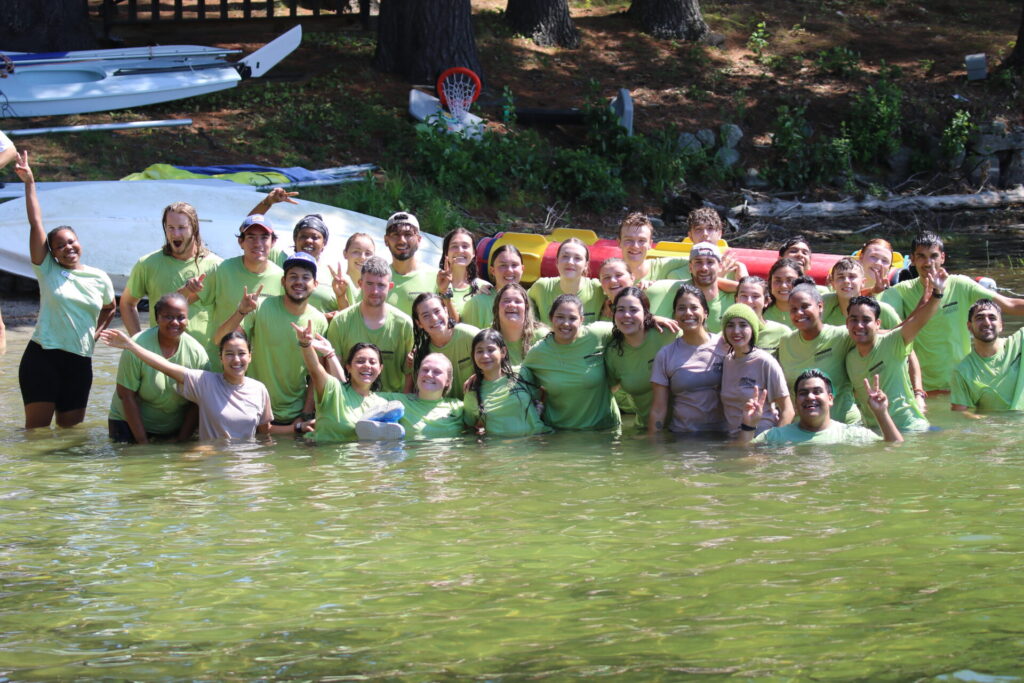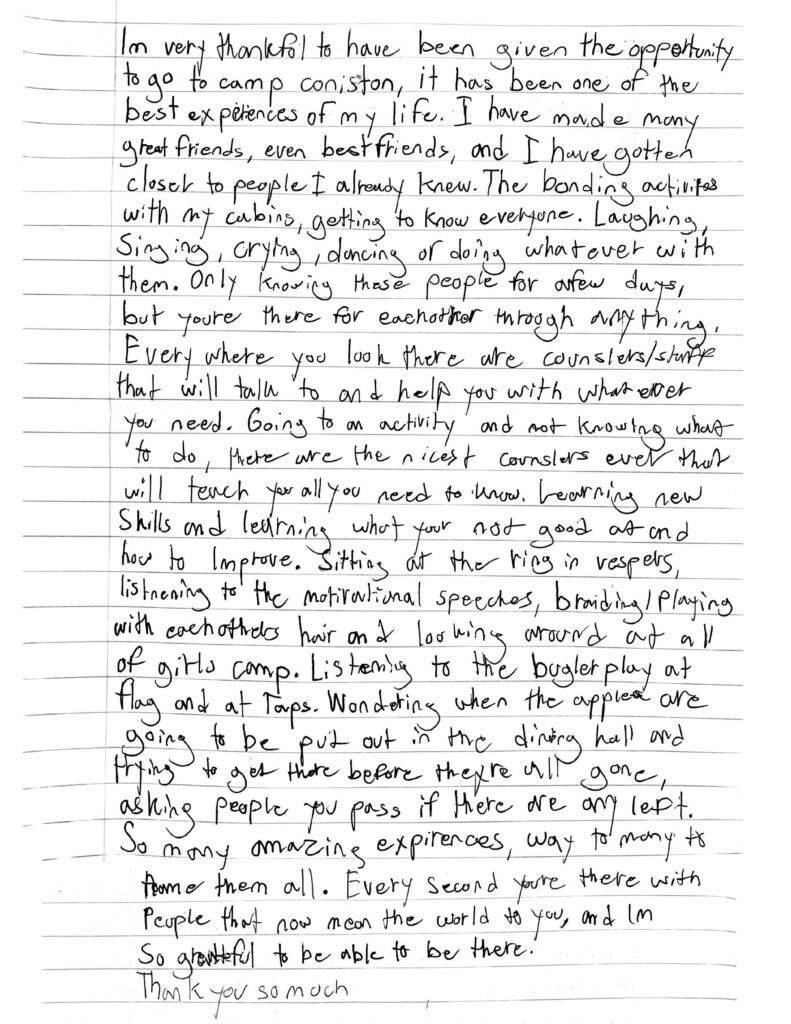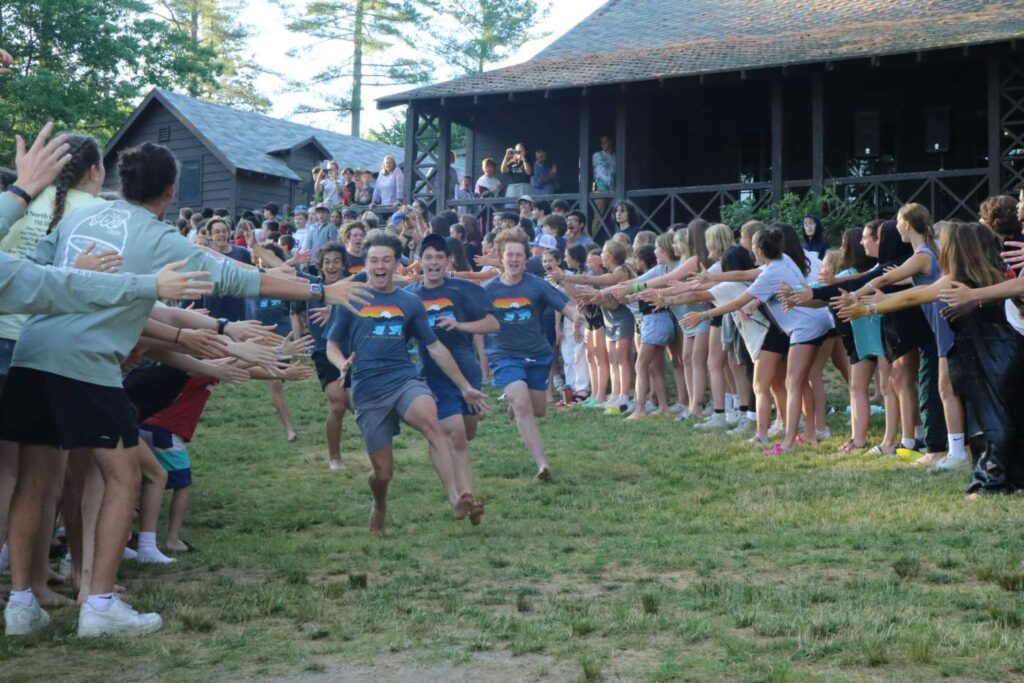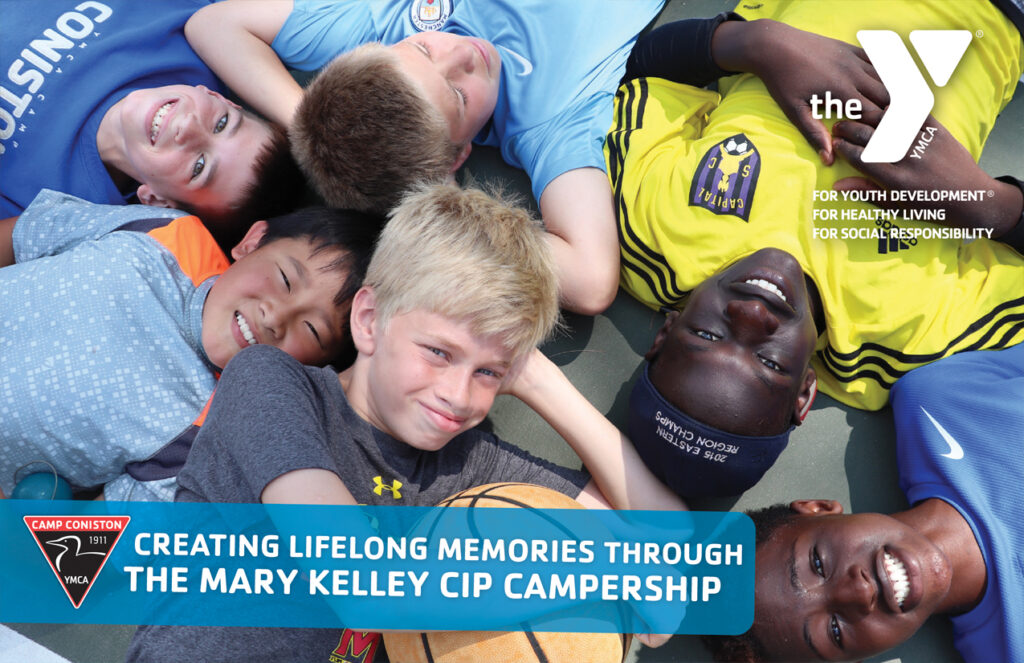
For those of you lucky enough to have been a CIT at Coniston, you know how much of an exciting and important part of your experience running into the lake is. After working together as a group and completing a life-changing trip, whether that was hiking Mount Washington, the Grand Canyon, Mount Katahdin or any of the other amazing CIT trips, running into the lake is the moment where you celebrate with your friends for completing that challenging experience with the entire Camp community cheering you on. It is a moment that you see every summer as a Camper and hope that one day you will get the chance to experience.
This summer we had over 40 international staff members and they were a truly wonderful group of people. We had staff from the UK, Ireland, South Africa, Mexico, Colombia and New Zealand. Our international staff members were not Coniston campers or CITs. For the past six years at Coniston we have worked to help our international staff feel welcome in our community, and to help them feel that Camp is as much their home as it is anyone that grew up as a camper here. So this year we decided it was time to give the international staff their chance to run in the lake.
During our orientation week with these staff members, they were given the opportunity to go to the top of Mount Washington, to give them an insight of what many of our CITs experience. It was a great day and the group loved seeing beautiful views from the top. After working hard all summer and bonding as a group, we put forward the idea of them running into the lake. They were absolutely thrilled. This is something they never thought they would have the opportunity to do.
So on the last day of Session 4, our international staff gathered on the A-Field where we talked about their successes of the summer before all piling into two of our Coniston buses to drive through Girls Camp through to the lakefront. Anxiety set in as we weren’t sure how this new tradition would be interpreted by the rest of Camp, but to our relief all staff and campers were by the lake cheering at the top of their lungs for the international staff!
We could hear the song ‘Don’t stop me now’, by Queen (a song voted on by the international staff to play), being blasted through the speakers. As they got out of the buses and ran down the hill into the lake, the cheers from the crowd were deafening. Other staff members were ready and waiting to hug all of their international friends. Seeing this group of international staff be so welcomed and accepted into the Coniston community during this new tradition was something we will never forget.
Some other international staff members shared what this new tradition meant to them:
Ale Campomanes, Cabin Counselor from Puebla, Mexico:
Running into the lake was literally my best memory of camp. The connection that the international group created that day was unreal and emotional. I love this new tradition!
Emily Barron, Horseback staff from East Yorkshire, England:
As an international member of staff, being able to run into the lake with all the other international staff members helped make me feel more a part of Camp and a part of their traditions. It made us all feel special and appreciated for the hard work we had put into Camp over the summer. It also definitely brought us all closer and showed how much we all appreciate having one another there.
Daryl Bogues, Overnight Coordinator from Banbridge, Northern Ireland:
For me, someone who was never a CIT, getting to run into the lake was an incredible experience to celebrate the unbelievable work the international staff have done all summer. To do it with a group of friends made it even better. I hope that this tradition sticks on to celebrate each new group of internationals that come to Camp each summer.
Lucy Barham, Cabin Counselor from Worcestershire, England:
The lake run is something that is really important to current staff members who finished their CIT trip, and it’s been a joy all summer getting to watch this years CITs run in, so it was really wonderful to be able to experience that myself and have the American staff be so supportive and excited that we got to do it!









 We are excited to announce the Mary Kelley CIP Campership, which provides the Coniston Experience to a deserving child whose parent is incarcerated so they may make new friends and participate in the Coniston program that Mary believed in.
We are excited to announce the Mary Kelley CIP Campership, which provides the Coniston Experience to a deserving child whose parent is incarcerated so they may make new friends and participate in the Coniston program that Mary believed in.